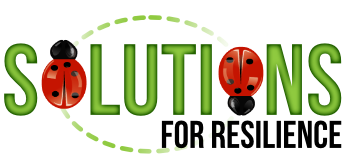Stressed Workers and How to Manage Leadership Stress
 In an interview with leadership coach, Gary Smith, we explored the commonly asked question, “How does stress affect leadership?” We discussed how to use stress in a positive way, how people’s ability to change varies, how personality preferences can cause misunderstanding, and how to support stressed workers.
In an interview with leadership coach, Gary Smith, we explored the commonly asked question, “How does stress affect leadership?” We discussed how to use stress in a positive way, how people’s ability to change varies, how personality preferences can cause misunderstanding, and how to support stressed workers.
The leadership author, John C. Maxwell wrote:
The greatest leaders are those who can anticipate the needs of their people, and can provide both support and direction in times of stress.”
But how do you look after both your own and your employees’ stress? Here are some ideas Gary Smith and I explored, plus more I added in the process of writing this article.
Dealing with Change
Leaders have always needed to deal with stressed workers, especially when change comes along. Gary has seen many leaders baffled and not knowing what to do in the face of change and stress. He asked, “How do we use stress in positive ways?”
We can count on change to happen. For each change we are invited to adjust, which requires us to demonstrate flexibility. We can feel scared or unsure because we don’t know the future or the outcome. We then look for an anchor to provide stability. One way a leader can provide stability is to indicate genuine care. You can give the message, “I’m here for you. My door is open. My ears are available to you.”
Frequent change is challenging, and a leader may end up thinking, “My goodness, Do I need to manage the change again?” Simply understanding the change cycle can help with empathic understanding.
The Change Cycle
When change happens, we accept it, or we don’t. If we accept the change, we adjust and then we go into a state of flow. Then another change happens, and we repeat the cycle. During the height of the covid pandemic, the health and safety protocols repeatedly changed. One day we were supposed to do one thing and the next day we had something else we were supposed to do. To keep up with all the changes was exhausting.
It is important to know that even happy changes are exhausting. Consider somebody getting married. Well! it’s happy time but it can also be stressful. I laugh at the young couple who are going to have a baby and they’re so excited to have the baby. That’s a good thing but they have no idea how sleep deprived they’re going to be, or how their relationship be tested. It can be helpful to reframe the effects of change from stressful to challenging.
The Speed of Adaptation
It is essential for leaders to recognize that individuals, including stressed workers, respond to change differently, and at distinct paces. The terms ‘slow adapter‘, ‘early adopter‘, and ‘moderate‘ were first proposed by Everett M. Rogers in his 1962 book Diffusion of Innovations.
- Firstly, there are the slow adapters who take time to adjust to any alteration.
- Then, the moderates who are more hesitant and eventually come to terms with the new reality. Subsequently, the early adopters enthusiastically embrace change.
- Lastly, the creators and visionaries are the ones who initiate change and transformation.
Leaders are wise to know which changes employees welcome and which ones will receive resistance or outright rebellion or quitting.
Honor Different Employee Capacities
Burnout is a phenomenon which occurs in the workplace and in a caregiving context, where the individual experiences an inability to meet the demands placed upon them. Signs of burnout can include behavioral changes such as grumpiness, cynicism, argumentativeness, complaining, and a lack of enthusiasm. Burnout and associated distress illnesses cost organizations billions of dollars in lost productivity and employee engagement.
The author and creator of the Know Your Why movement, Simon Sinek said,
Leadership is not about being in charge. It’s about taking care of those in your charge.”
Leaders can help to prevent stressed workers from burnout by being mindful of the capabilities and strengths of their staff. For example, a single adult may have the capacity to take on extra hours each week, whereas a single parent may find this to be a burden. Appreciating the individual’s needs and respecting their limits is essential; when someone says, “That’s not good for me to do” or “I’m not the best person for that task”, it is important to listen and trust them.
Build on Strengths
We can also minimize distress for employees by placing them in roles that build on their strengths. Strengths put us in the zone and energize us. When we are too often required to do tasks that are not in our strength pool, we will become depleted. Ensure employees jobs primarily are a good fit for their strengths, that is their skills, talents, and knowledge.
Marcus Buckingham and Martin Seligman are both researchers and authors of the subject of building on strengths and have concluded several advantages of doing so. Results include
- Increased engagement: When employees are given the opportunity to use their strengths, they become more engaged and motivated to achieve their goals.
- Improved performance: Strengths-based development can lead to higher levels of performance as employees are encouraged to strive for excellence in their areas of strength.
- Increased job satisfaction: Employees who work in areas where they can use their strengths feel more satisfied with their job and are more likely to stay with the company. 4. Improved teamwork: When employees focus on their strengths, they are more likely to collaborate effectively with their colleagues and help foster a more positive team environment.
- Improved morale: When employees are given the opportunity to use their strengths, they feel more valued and appreciated, which can lead to higher morale in the workplace.
Leaders can begin to build on strengths by:
- Assessing employees’ strengths. Seligman offers a free, well-researched, and thorough VIA Character Strengths Inventory.
- Providing Regular Feedback: Allow employees to receive regular feedback on their performance so they can understand what they are doing well and what they can improve upon.
- Creating Challenging Goals: Set challenging but achievable goals that will push employees to reach their full potential and build on their strengths.
- Allowing Flexible Working Hours: Give employees the flexibility to work when they are at their best, so they can use their strengths to the fullest.
- Offering Training Opportunities: Provide employees with access to training opportunities that can help them build on their strengths and improve their weaknesses.
Honor Personality Differences
To effectively work with introverted and extroverted employees and team members, it is essential to build relationships and recognize their contributions. One strategy to do this is to express random and strategic appreciation, taking notice of those who are often overlooked and intentionally creating opportunities to acknowledge their hard work. Additionally, it is important to be aware of those who may try to dominate the conversation, allowing for time for introverted people to speak and feel comfortable doing so. Finally, when a problem arises, having already established a trusting relationship can make the process of working through it much easier.
An insightful exercise to help you familiarize yourself with the people that report to you is to write down the names of all employees under you. If you find yourself unable to recall a name or two, this should be taken as an indication that you need to reach out and get to know them better.
Role Model and Manage Your Own Stress
Past US President Ronald Reagan said, “Stress is the price of leadership. If you want to lead, you must be willing to accept the stress that comes with it.” But when leaders practice stress management skills they role model healthy behaviours and create a culture of resilience within their team. Leaders have a responsibility to set an example of how to manage stress in healthy ways, as well as to create an environment that encourages stress management. When leaders effectively manage stress, they can reduce employee burnout, boost morale, improve productivity, and save their employees from being stressed workers.
Check if you, as a leader:
1. Practice healthy stress management habits, such as deep breathing, daily exercise, and healthy eating.
2. Take regular breaks throughout the day to clear your head and refocus on the task at hand.
3. Talk openly with team members about stress levels and how they are managing their own stress.
4. Set realistic expectations and deadlines and provide clear steps and support to reach goals.
5. Acknowledge and celebrate small successes along the way.
6. Encourage team members to take time off when needed.
7. Schedule regular check–ins with team members to discuss progress and provide support.
8. Create a positive and supportive work environment.
9. Create a plan for how to handle unexpected stressors.
10. Provide regular feedback on performance and progress.
When leaders help themselves and their employees they create positive work environments and foster healthy relationships between employees and employers. With the right knowledge and tools, leaders can use stress as a catalyst for positive change and create a work atmosphere that turns stressed workers into engaged employees.




